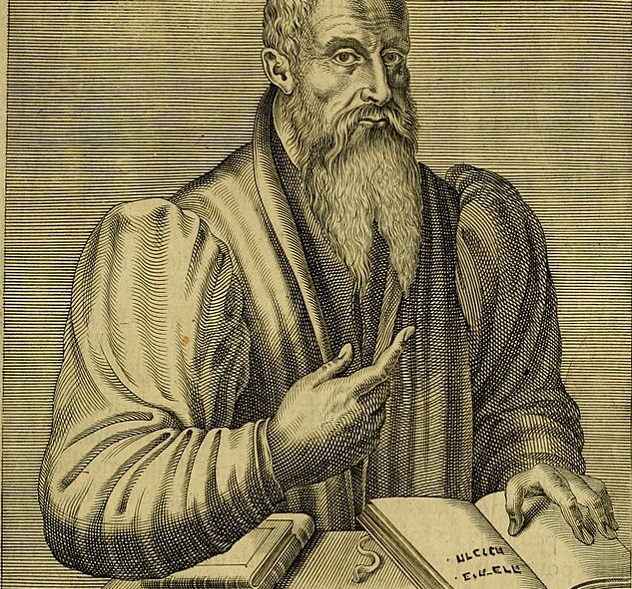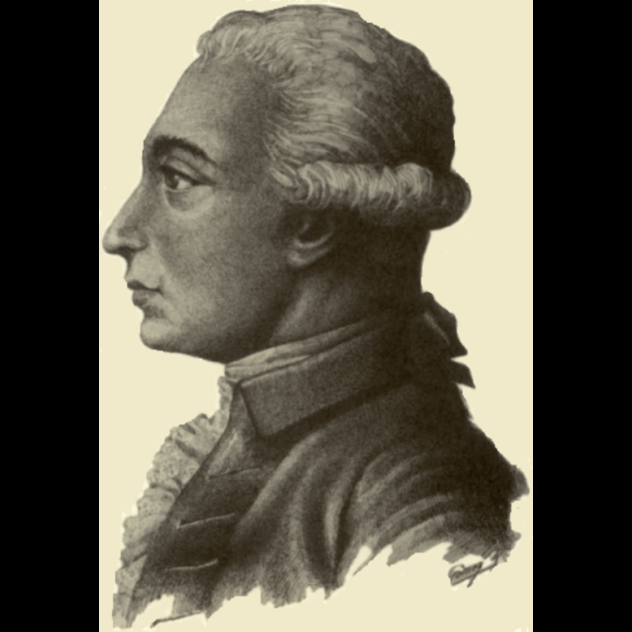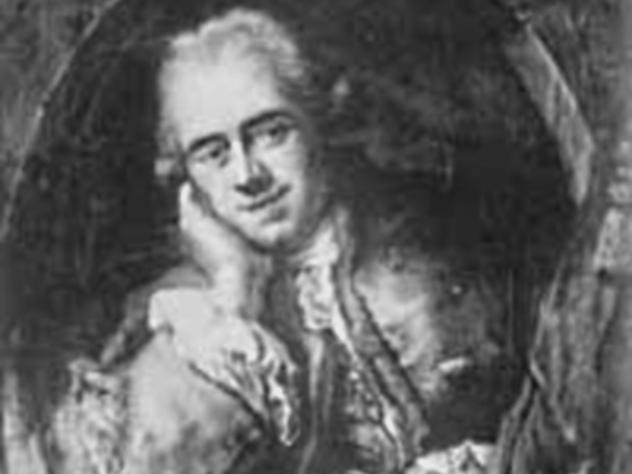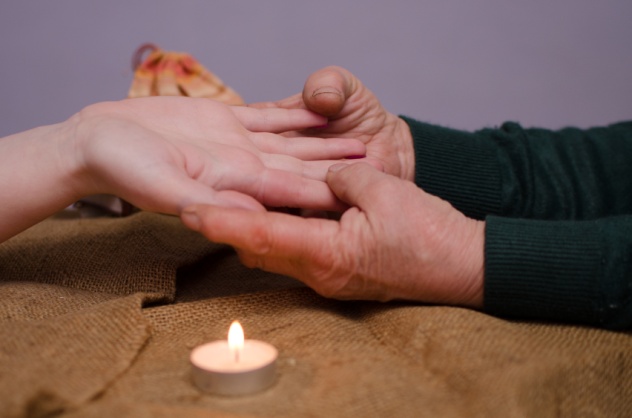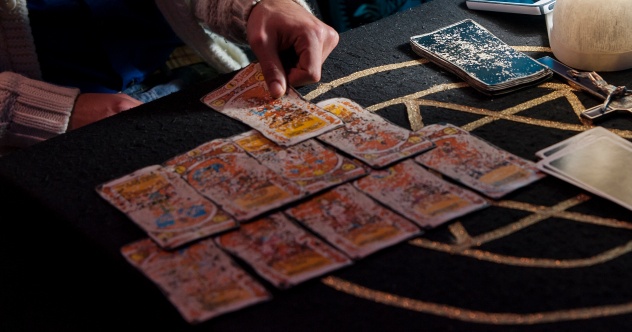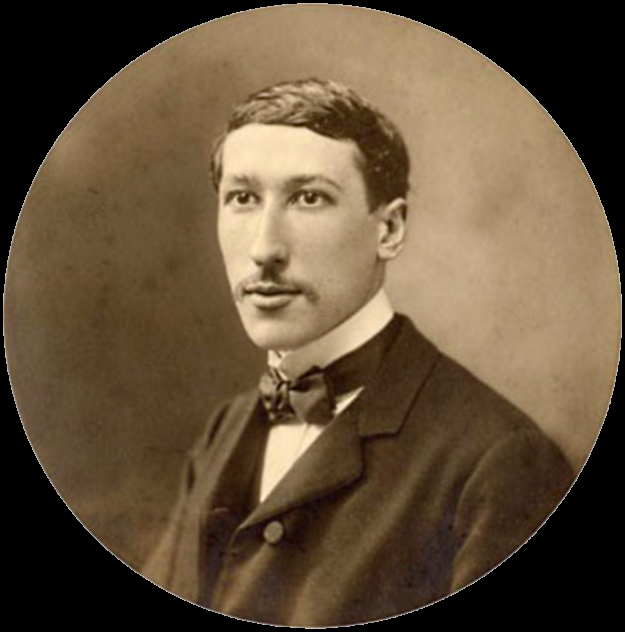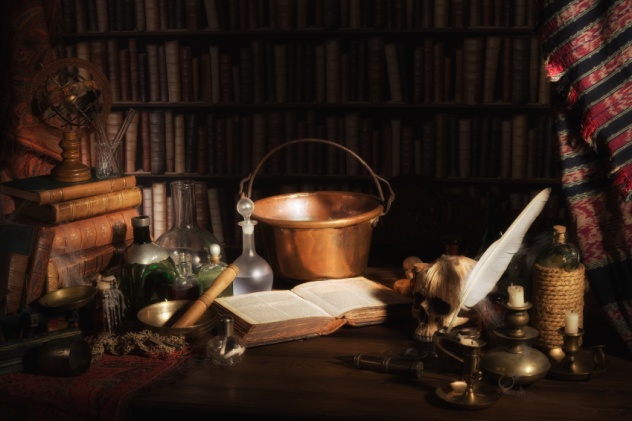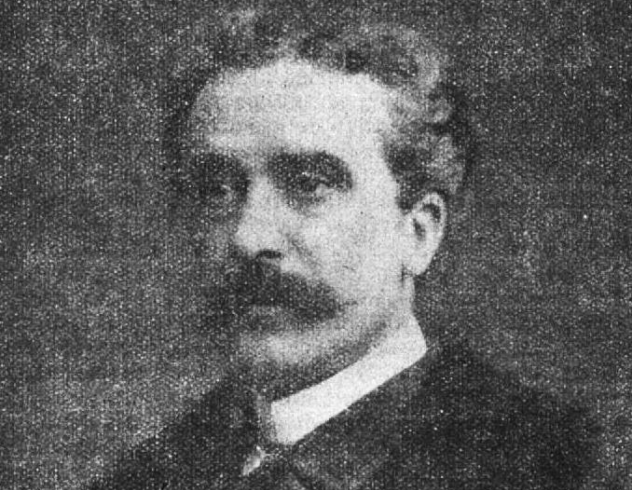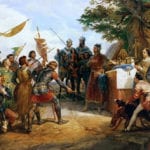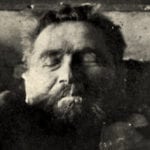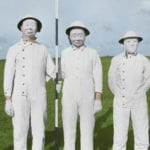10 Guillaume Postel
After moving to Paris in the early 1500s, Guillaume Postel picked up an assortment of Hebrew and Latin books from a local Jew and soon taught himself Hebrew. At the College de Sainte Barbe, he practiced mystical, ascetic Christianity and hoped for the reformation of the famously corrupt Catholic Church of his day. Meanwhile, he wrote on the subject of geography, sailed several times to the East, and began learning Arabic. He became a Jesuit priest in Rome and studied many arcane documents (which only priests were privy to) while there. In the early 1540s, Postel had a vision in which he was told to warn the French king, Francois I, that he should reform his kingdom in preparation for his coming role as the royal initiator of an approaching “Universal Restoration.” Francois I took Postel’s message seriously at first, but a royal adviser soon changed his mind. Rumors began to spread that Postel was insane. Postel’s strange ideas about a coming French world empire and his reluctance to admit the Pope’s complete authority got him booted out of the Jesuits only a year after joining. However, when Francois I ignored Postel’s prophetic warnings by formally siding with those who backed the Pope’s supreme authority over Reformers within the Church, he died several days later. The Divine inspiration behind Postel’s vision seemed confirmed. Postel then moved to Venice where he served as a chaplain at a hospital. He became the confessor and disciple of an older woman, a mystic named Mother Johanna (Madre Zuana) who cared for the sick and was known for her charity. In Venice in 1547, he also purchased a manuscript of the Zohar (the primary text of the Kabbalah). He integrated Kabbalistic and Christian ideas and apparently came to believe Johanna’s claims that her soul had become infused with Christ and that she was a female embodiment of divinity. After Johanna’s death, Postel claimed to have been visited by her spirit in 1552. This experience made him a “new man,” born again as the son of Christ and the “Mother of the World.” Johanna’s spirit had transmuted his physical body, he said, and supplied him with spiritual garments, one white and one red. He said the red one had repaired his anima and animus, the male and female aspects of his being. After this, Postel’s new prophetic message was that Mother Johanna, the “Virgin of Venice,” had been the second Eve, just as Christ had been the second Adam. She had ascended to heaven in material form and had joined with Christ in a “chemical wedding.” She would soon effect the restoration of all things. He published these heretical ideas in two books and never recanted them. Fortunately for Postel, he was declared insane and excused from his heresy. He was imprisoned in Rome and avoided being burned at the stake. In 1559, he and all prisoners from the Inquisition prison were released upon the death of Pope Paul IV. Though the Inquisition burned Postel’s books about the Virgin of Venice, copies are believed to have survived in private hands and made their way to France, Germany, and England, where they were influential throughout the Reformation. His description of his spiritual experiences seems insane from a literal perspective, but on a symbolic level they bear an uncanny resemblance to the teachings of the European alchemists that would appear in his wake. Moreover, Postel is known to have brought back documents from his journeys to the East which deal with the science of astronomy, and there are strong indications that the knowledge contained in these documents was transmitted to Copernicus and other European scientists during the Reformation Period.
9 The Unknown Philosopher
Louis-Claude de Saint-Martin is an intriguing figure whose life and teachings synchronized creepily with the birth of Modernity. Although his writings have had a huge effect on Western occultism, he is little-known to most people today. Saint-Martin was born in 1743. He started his adult life as a lawyer but quit the profession after just six months. He then joined the army and ended up stationed in Bordeaux, where he met Martinez de Pasqually, a Jewish mystic. He was initiated into Pasqually’s occult order, known as the Elus-Cohens, in 1768. Saint-Martin was initiated into the highest degree of the Elus-Cohens in 1770, and he left the army a year later. He wrote only one book during this time—Errors and the Truth, in 1775. Though he accepted most of Pasqually’s teachings, he disagreed with the order’s method of theurgic ritual. Saint-Martin preferred a simpler mystical practice which he called “The Way of the Heart,” and after failing to convince the order to adopt a more contemplative approach, he abandoned it altogether in 1790—right at the start of the French Revolution. Free of Pasqually, Saint-Martin found a new influence in the writings of the mystic Jakob Boehme. He began to write prolifically on occult subjects under the pseudonym “The Unknown Philosopher.” His works infused France with spiritual ideas about freeing the human spirit, which coincided uncannily with the political aims of the revolutionaries. However, according to well-known occultist A.E. Waite, he did not condone the kinds of “forces released by an egotistical, selfish striving for freedom motivated by inordinate self-will.” Despite having been born of French nobility, Saint-Martin survived the French Revolution and died in 1803. Besides influencing many French thinkers and occultists, he is also credited with influencing the German Romantics, as well as with anticipating the materialism of the 19th century. You can read about Saint-Martin’s teachings in A.E. Waite’s biography on him.
8 Jean-Baptiste Willermoz
Jean-Baptiste Willermoz was initiated into French Freemasonry in 1750 at only 22 years old. Two years later, he was elected venerable master of his lodge in Lyon. Despite having initially reached such prestigious status, he would have to reenact the routine rituals of mainstream Freemasonry for another 24 years before finally finding something that really stirred his soul. Willermoz was accepted into the mystical order of the Elus-Cohens in 1776. Like his friend Saint-Martin, Willermoz could see the value in their leader’s (Pasqually’s) teachings, but he found the rituals which expressed them to be too esoteric for most people to comprehend. Willermoz believed that the symbolic meaning behind the rituals was the real deal, but it was too hard to extract. While Saint-Martin abandoned Pasqually’s rituals and instead found his own “Way of the Heart,” Willermoz sought a way to make the occult meaning behind the rituals more accessible to everyone. He combined the structures of Freemasonry with Pasqually’s initiation rituals and invented what came to be referred to as the “Rectified Scottish Rite.” Under Willermoz’s leadership, the Rectified Scottish Rite became an officially established part of Freemasonry. Though little-known today, Willermoz played a critical role in cementing Freemasonry’s links with the occult.
7Adolphe Desbarolles
Palmistry (aka chiromancy) is believed to have originated with the Brahmins of India. Aristotle is said to have found a manuscript in India that explained the art, and it was brought to the West and translated. Many Western occultists practiced chiromancy, but its study was suppressed by the church due to its links with astrology. The art became mostly associated with gypsies in the Early Modern period. By the 19th century, however, the church had begun to lose power. Adolphe Desbarolles and others revived interest in palmistry. Desbarolles is credited with formulating the art into a more credible system, after charlatans and quacks had supposedly distorted it. He did not attempt to explain everything scientifically, however. He was a pupil of the more famous occultist Eliphas Levi, and he is likened to a “Renaissance mystic.” His beautifully illustrated first work, Les Mysteres de la Main, contains sections on Kabbalah, the influence of the stars, and numerology. His second book, Revelations Completes, is the result of more than 20 years of study and is over 1,000 pages long. Desbarolles practiced palmistry in Paris, charging 20 francs a session and using a microscope to view finer lines on the hand. He became known as “the father of modern palmistry”.
6 Etteila
The Frenchman who became known as Etteila reversed his surname (Aliette) and decided to publish under the pseudonym. In 1770 he published his first book, Etteila, or a Way to Entertain Oneself with a Pack of Cards. Published prior to the arrival of tarot cards in France, Etteila’s system involved using ordinary playing cards for divination. The book enjoyed several print runs. After this, Etteila disappeared from history for a while before he reemerged selling prints. He wrote another book on astrology, and claimed to have invented the term “cartomancy” (using cards as a tool of divination). He also falsely claimed to be a mathematician. When tarot cards arrived in France, Etteila claimed that the pictures and symbols on the cards had their origins in Egyptian magic, and attempted to publish Egyptian Cartomania, or Interpretation of the 78 Hieroglyphs which are on the Cards Called Tarots in 1782. The book was banned by royal censors, but two years later, he succeeded in publishing A Way to Entertain Oneself with the Pack of Cards Called Tarots. Etteila helped to develop and popularize the esoteric tarot card. During the events preceding the French Revolution, when many were understandably concerned about their futures, he made good money as a card reader. He is said to have accurately predicted the fates of many who went to the guillotine. He also designed his own deck of tarot cards, “The Grand Etteila,” which differs significantly from the tarot cards that we recognize today. Today, tarot cards are popular around the world, and Etteila’s critical part in their development is undeniable.
5 Rene Guenon
Born in 1886 to a wealthy French family, Rene Guenon (aka Shaykh ‘Abd al-Wahid Yahya) became an occultist, Freemason, and metaphysician. He was also a scholar and thinker of great merit and influence, although his formal education was cut short by his desire to inquire after spiritual truths from every tradition. Guenon believed the modern period to be another dark age. In his study of religions, he recognized areas of common ground between Eastern and Western ideas and sought to formulate the “perennial philosophy,” which is the eternal truth said to flow through the heart of all religions. He is recognized as a founder of what has become known as the “traditionalist” school of religious scholarship, which influenced key academics like Houston Smith, who is said to have written the most important text in the field of religious studies to date—The World’s Religions. At the same time, Guenon used rigorous scholarship to debunk the leading cranks of his day. According to the famous anthropologist Mircea Eliade in his book The Occult and the Modern World: The most erudite and devastating critique of all these so-called occult groups was presented not by a rationalist “outside” observer, but by an author from the inner circle, duly initiated into some of their secret orders and well acquainted with their occult doctrines; furthermore, that critique was directed, not from a skeptical or positivistic perspective, but from what he called “traditional esoterism.” This learned and intransigent critic was Rene Guenon. Guenon was especially enamored with Hinduism and mystical Islam. After publishing several books, he converted to Islam and eventually moved permanently to Egypt, where he became a practicing Sufi and a sheikh. He died in 1951, but his works have influenced many.
4 Francois Jollivet-Castelot
At the end of the 19th century, Francois Jollivet-Castelot invented “hyperchemistry,” a sort of neo-alchemy. It was an occult synchronization of scientific chemistry and alchemy, and Jollivet-Castelot explained his theories about it in Comment on Deviant Alchemiste. The book contains lengthy discussions on the Kabbalah as it relates to alchemy and the alchemical interpretation of the tarot. Jollivet-Castelot added practical hints and tips for the aspiring neo-hermeticist. These included morning prayers while sitting on the edge of one’s bed with a silk cloth covering the head, a lukewarm morning bath (scented primarily with rose) in which magical ablutions were to be performed, and a breakfast of tea with biscuits or toast. The great work of the modern alchemist was then to be conducted in a well-ventilated laboratory with a darkened area for astral projection. The hyperchemist, according to Jollivet-Castelot, should quit work at about 6:00 PM and take a walk to unlock the brain. Poetic reflection and artistic sentiment were to be induced by viewing the setting Sun and stars. Finally, a large evening meal was allowed, followed by tobacco. At night, esoteric literature was to be studied. The theater and other worldly pleasures were to be avoided due to the inevitable hazard of “mental dissipation,” but the company of women (from time to time) was encouraged. Jollivet-Castelot ran the Alchemical Society of France in Paris and enjoyed credibility for a while after Rutherford and Soddy documented radioactive “transmutation” in the early 20th century. Substances such as radium made people begin to wonder if traditional alchemists had been onto something after all. Attitudes changed dramatically. Scientists from the 19th century seemed to have missed something amazing about the nature of matter. In 1920, Joillivet-Castelot claimed that he had succeeded in making gold from silver. He also published three novels (as well as other books), founded a non-atheistic communist organization, influenced Swedish writer August Strindberg, and was unduly taken seriously by mainstream scientists in Britain, Germany, and France.
3 Papus
Gerard Encausse, who used the pseudonym “Papus,” initially joined the French Theosophical Society, although he abandoned it soon after due to some dispute. Encausse was also a member of the Parisian branch of the Hermetic Order of the Golden Dawn and helped to found the Kabbalistic Order of the Rose-Croix. He also founded the Independent Group for Esoteric Studies. His writings became popular and made occult practices common among the bourgeoisie of his day. Papus’s influence extended all the way to Russia, where Tsar Nicholas II was worried about the rise of the Bolshevik revolutionaries. He asked for Papus’s help, and Papus supposedly contacted the spirit of the tsar’s father in a seance. The indecisive Nicholas was said to have pleaded with his father’s spirit for advice, but it was revealed that the revolutionaries would prevail and bring down the aristocracy. Papus also encouraged Nicholas’s wife, Alexandra, to employ the swastika as a supernatural talisman to ward off evil. She had the symbol etched onto her diary and wore jewelry which bore the motif that would eventually be made infamous by Hitler and the Nazis. She even etched swastikas into the window frames of the house in which her and Nicholas and their entire family were murdered, to no avail, sadly (unless you’re a murderous Bolshevik). Papus founded yet another order, the Order of the Martinists, based on the teachings of Louis-Claude de Saint-Martin. By 1900, it had grown to several hundred members under his energetic leadership. However, after Papus died of tuberculosis while working as a medic in World War I, the numbers dropped off. Nonetheless, the order is said to have influenced, among others, Pablo Picasso. Those so inclined can still become Martinist initiates to this day.
2 Alexandre Saint-Yves D’Alveydre
In the 19th century, the occultist Alexandre Saint-Yves d’Alveydre wrote a book called The Kingdom of Agarttha: A Journey into the Hollow Earth. He claimed that the Earth was hollow and that ancient masters of occult wisdom lived in a city at its center (Agarttha), ruling over a civilization of millions. This knowledge had supposedly been revealed to him after his schooling in Sanskrit texts by a mysterious Eastern guru. D’Alveydre referred to himself as a “spontaneous initiate” who had magically spied upon this subterranean realm. He even included in the book open letters to the dignitaries of his day (Queen Victoria, Emperor Alexander III of Russia, and Pope Leo III), inviting them to join him in locating Agarttha. Adding to the mystery, just he when he was about to publish his book, d’Alveydre changed his mind at the last minute for some unknown reason and destroyed every copy except one. After his death, this last existing copy came into the possession of Papus, who published it in 1910 with some omissions. Decades later, or so the story goes, it turned out that the printer had kept a copy of the original. Jean Saunier used this version to publish d’Alveydre’s book in 1981, and it has since been translated into English by the scholar Joscelyn Godwin. According to Godwin, The Kingdom of Agarttha might have been dismissed as the fantasy of some crank had it not been for Polish writer Ferdinand Ossendowski. In 1922, Ossendowski published a sensational account of his travels through Central Asia as he fled the Russian Revolution. While in Mongolia, he claimed to have heard a story about an underworld kingdom with 800 million inhabitants called “Agharti.” Many details corroborated the account of Agarttha given by d’Alveydre. Ossendowski’s version included a prophecy that the denizens of Agharti would appear on the Earth’s surface in 2029 and share their wisdom with humanity. Although it seems more credible that Ossendowski had come across d’Alveydre’s story of Agarttha and simply altered the names and details in order to avoid being charged with plagiarism, his story of Agharti nonetheless drew the attention of the scholarly and respected Rene Guenon. “Independently of the evidence offered by Ossendowski,” he said, “we know from other sources that stories of this kind are widely current in Mongolia and throughout Central Asia, and we can add that there is something similar in the traditions of most peoples.” D’Alveydre’s work is backed up to some extent by esoteric traditions in the East, as Guenon concurred. Agarttha also drew the attention of the Austrian occultist Rudolf Steiner, who helped to popularize the legend in Germany. Several other popularizing writers followed. Nazi occultists are widely rumored to have murdered Steiner and to have actually searched for Agarttha.
1 Georges Soules
Georges Soules was born in 1907. He was a mysterious figure who has intrigued “power behind the throne” conspiracy theorists because of his known involvement in both the occult world and politics. He did make some powerful friends at college in Paris in the late 1920s, and they are known to have helped him throughout his life. Some of his friends are said to have helped get French president Francois Mitterrand elected. As a young man, Soules joined the French Socialist Party in 1932, but his political allegiance changed rapidly when he switched to fascism prior to the beginning of World War II. He was conscripted into military service at the war’s outbreak but arrested and imprisoned soon afterward. Upon his release, he was involved in the secretive world of the French Resistance, which opposed the occupying fascists. After the war (despite having been on the winning side) he went into hiding in Switzerland, because someone else named Georges Soules was found guilty in absentia of supporting the Vichy regime. Supposedly—though it’s a pretty big coincidence—it wasn’t the same person. After being granted amnesty in 1951, Soules returned to France under a new name, Raymond Abellio. Upon his return, Soules was imprisoned for just 30 hours before being released, his connections pleading on his behalf. If Soules’s unproven effect as a well-connected occultist trying to influence world politics is ignored, his main influence on the modern world comes through literature. Soules, writing under his new name, won several literary prizes and published several noted Surrealist novels. The last years of his life were spent practicing mysticism, and he died in 1986. HTR Williams has been interested the history of Occultism for many years. To read more of his work, please visit his website, or feel free to follow him on Facebook.
